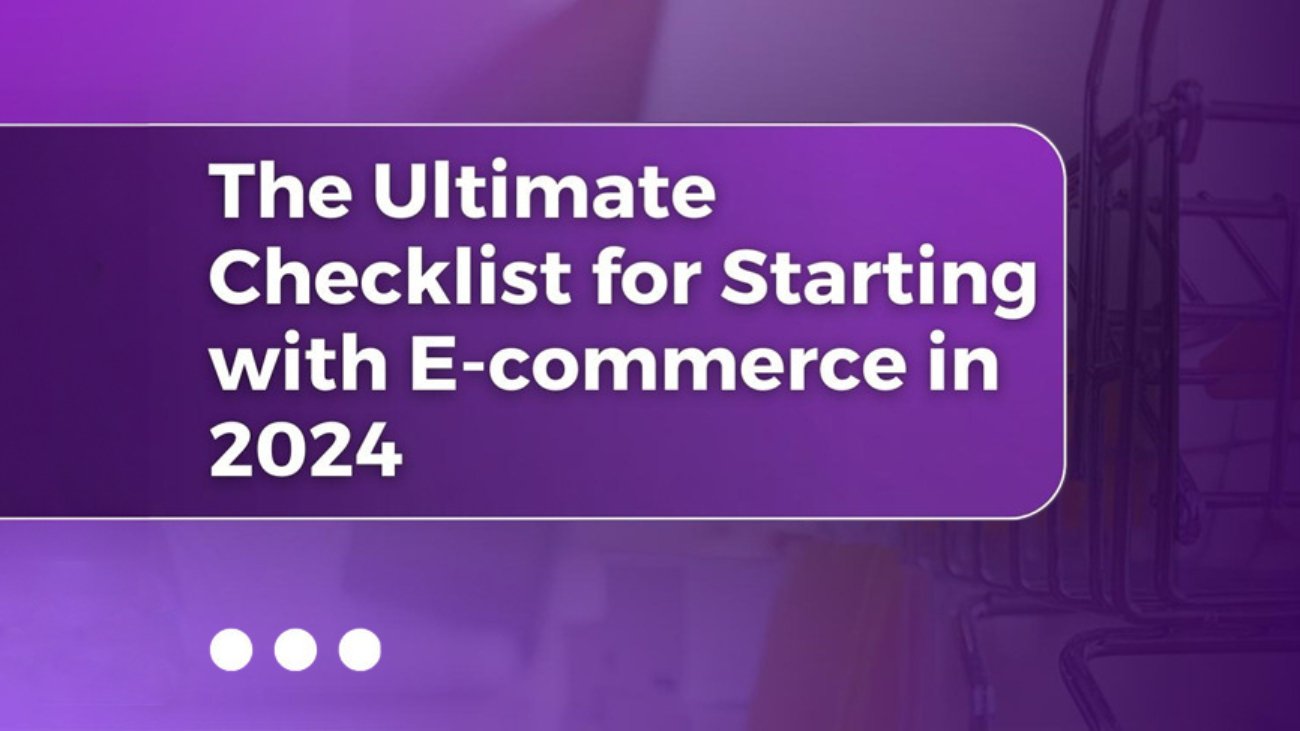In the rapidly evolving digital landscape, launching an e-commerce business in 2024 requires a blend of strategic planning, an understanding of the latest technologies, and an unwavering commitment to customer satisfaction. Whether you’re a budding entrepreneur or an established business looking to expand online, this comprehensive checklist will guide you through the essential steps for starting with e-commerce, ensuring you’re well-equipped to navigate the complexities of the digital marketplace.
Market Research and Niche Selection
Understand Your Audience:
Before diving into the e-commerce world, it’s crucial to identify your target market. Understanding their needs, preferences, and buying behaviour will help you tailor your offerings and marketing strategies effectively.
Choose Your Niche Wisely:
Select a niche that you’re passionate about and has a viable market demand. Conduct thorough research to ensure it’s profitable and not overly saturated.
Business Planning and Strategy
Develop a Business Plan:
Outline your business goals, strategies, and financial projections. A well-crafted business plan is essential for clarity of direction and securing funding.
Choose the Right Business Model:
Decide whether you’ll be selling your own products, dropshipping, or adopting a hybrid model. Each has its advantages and challenges, so choose one that aligns with your goals and resources.
Legalities and Compliance
Register Your Business:
Choose a business name and register it along with your domain name. Ensure they are memorable and reflect your brand.
Obtain Necessary Licenses and Permits:
Depending on your location and what you’re selling, you may need specific licenses and permits to operate legally.
Understand Tax Obligations:
Familiarize yourself with the tax regulations in your country and any other countries you plan to sell to.
Setting Up Your E-commerce Platform
Select the Right E-commerce Platform:
Choose a platform that suits your business size, budget, and technical expertise. Popular options include Shopify, WooCommerce, and Magento.
Design Your Online Store:
Your website should be user-friendly, mobile-responsive, and reflective of your brand identity. Consider hiring a professional designer if needed.
Secure Your Website:
Implement SSL certificates and ensure your platform is PCI DSS compliant to protect your customers’ data.
Product Sourcing and Management
Source Quality Products:
Whether you’re manufacturing your own products or sourcing from suppliers, prioritize quality and reliability.
Set Up Efficient Inventory Management:
Use inventory management software to track stock levels, orders, and deliveries efficiently.
Pricing and Payment Processing
Competitive Pricing Strategy:
Set prices that are competitive yet profitable. Consider your costs, market demand, and competitor pricing.
Integrate Secure Payment Options:
Offer multiple payment options that are secure and widely used by your target audience. Ensure your payment gateway is reliable and supports various currencies if selling internationally.
Marketing and Customer Acquisition
Develop a Marketing Strategy:
Utilize a mix of SEO, content marketing, social media, and email marketing to reach your target audience and drive traffic to your site.
Leverage Social Proof:
Encourage reviews and testimonials from your customers to build trust and credibility.
Shipping and Logistics
Choose the Right Shipping Partners:
Partner with reliable shipping companies that offer tracking and reasonable rates. Consider offering free shipping to increase conversions.
Streamline Your Fulfillment Process:
Ensure your order fulfillment process is efficient and scalable. Consider using third-party logistics (3PL) if handling logistics becomes too complex.
Customer Service and Support
Offer Excellent Customer Service:
Provide multiple channels for customer support, including live chat, email, and phone. Quick and helpful customer service can significantly enhance customer satisfaction and loyalty.
Implement a Return Policy:
Have a clear and fair return policy in place. This can help reduce purchase hesitations and improve customer trust.
Continuous Improvement and Scaling
Analyze Performance:
Use analytics tools to track your website’s performance, customer behavior, and sales patterns. This data is invaluable for making informed decisions and improvements.
Plan for Scaling:
As your business grows, consider expanding your product line, entering new markets, or enhancing your marketing efforts. Always look for opportunities to innovate and improve.
Starting an e-commerce business in 2024 is an exciting venture that comes with its set of challenges and opportunities. By following this ultimate checklist, you’ll be well on your way to launching a successful online store that not only meets the needs of your target market but also stands out in the competitive e-commerce landscape. Remember, the key to success lies in meticulous planning, continuous learning, and an unwavering focus on delivering exceptional customer experiences.
